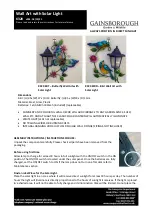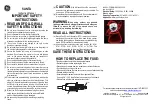
Version 0.3
Page | 28
7 Flow Graphs – Conference Calls
The intent of this document is to describe how to establish conference call sessions between one or
multiple parties from a typical handset MMI. Secondly, explain the conference call scenarios in a SME
network – using call flow diagrams.
Call Conferencing Operation
In call conference process architecture, a user agent (UA), known as a participant, establishes a SIP
dialog with another UA, known as a focus. The focus is the central point of control, authentication,
and authorization. This section defines the operation of a focus and participant UAs. Note that only
the signalling (SIP) needs to be centralized; the media can be centrally mixed, distributed, or even
multicast.
Types of Conference Calls
There are three main types of conference calls approach explored from the perspective of different
user agent (UA) types (usually known as participant). We briefly describe two of them.
•
Conference unaware participant:
The simplest user agent is able to dial in to a conference and to be invited to a conference. Any
conferencing information is optionally conveyed to/from it using non-SIP means. Such a user
agent does not usually host a conference.
•
Conference aware participant
A conference-aware user agent supports SIP conferencing call control SUCH as a conference
participant. A conference-aware UA should be able to process SIP redirections.
A conference-aware UA usually renders to the user any information about the conference
obtained from the SIP conference package/feature.

































